Nigara Hamono
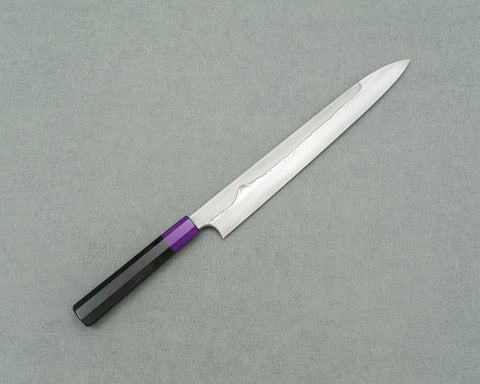
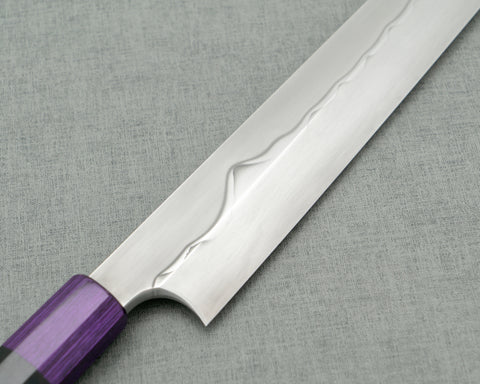
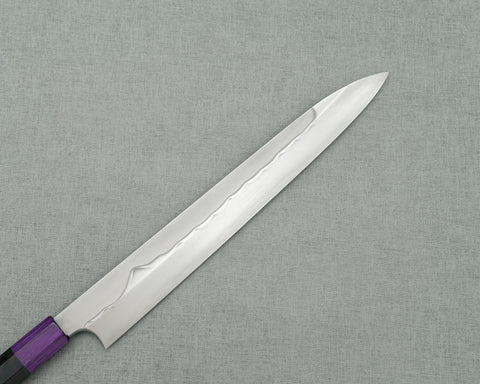
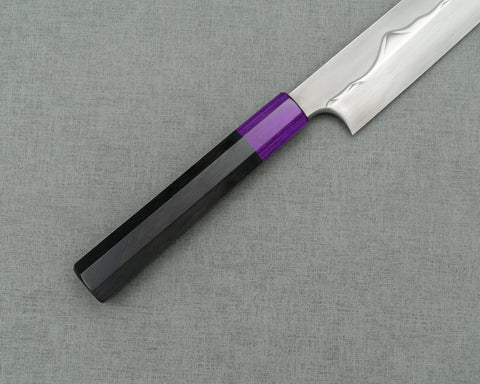
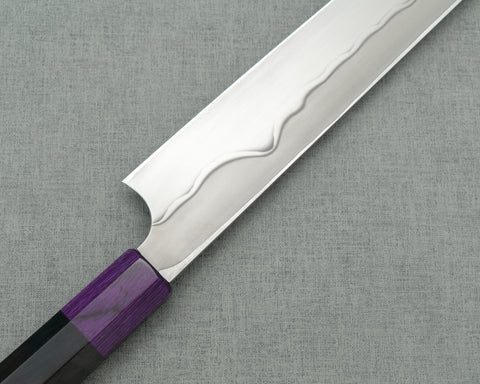
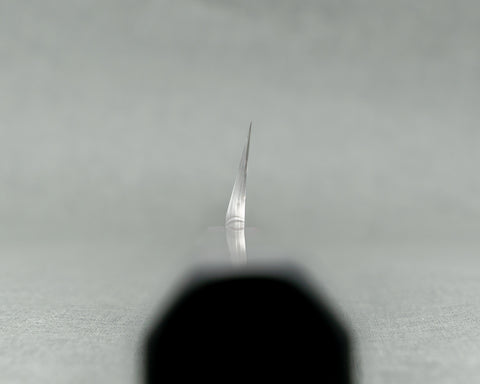
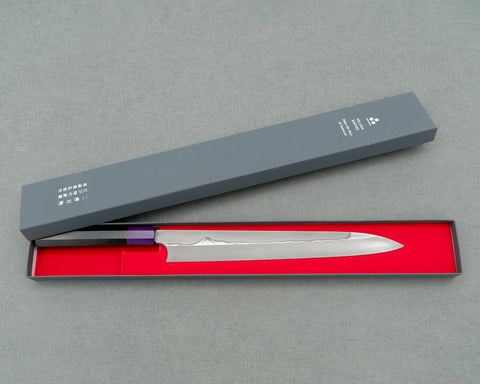
Nigara Mizu-Honyaki Aogami #2 "Mount Fuji" 300mm Yanagiba
Pickup currently unavailable
This exceptional yanagiba features a stunning "Mount Fuji" hamon line on the blade as the result of the exquisite Mizu-honyaki treatment. The blade then went through a gentle kurosome progress to enhance the appearance of the hamon line. The result is a magnificent Fuji Mountain ripple that is visible on both sides of the blade. The Aogami #2 steel is known for its exceptional hardness and edge retention. There are only a handful of blacksmith in Japan who could make quality mizu-honyaki blade like this, especially when paired with harder steel like the Aogami #2.
Spec:
- Origin (Made in): Hirosaki, Aomori Prefecture, Japan
- Brand: Nigara Hamono
- Craftsman: Tsuyoshi Yoshizawa (吉澤 剛)
- Knife Type: Yanagiba
- Blade
- Construction: Mizu-Honyaki
- Grind: Single Bevel (Right-handed)
- Steel Type: Aogami #2 (Blue #2)
- Hardness: 63-64 HRC
- Hand-forged, hand-ground, hand-sharpened
- Blade Finishes:
- Nami Ukashi Ripple Finish (Mount Fuji)
- Kurosome (Black Etched)
- Blade Length (heel-to-tip): 290mm (11.4")
- Blade Height (at heel): 40mm
- Spine Thickness
- Above heel: 4.4mm
- Middle: 3.6mm
- Handle
- Shape: Hachikaku (Octagonal)
- Material: Ebony
- Kuchiwa: Violet Pakka Wood
- Length: 146mm
- Overall Length: 450mm
- Weight: 259g (9.16oz)
About Nigara Hamono 二唐刃物
With 350 years of history, starting from making swords for Tsugaru clan in the early Edo period, Nigara Hamono has passed down knowhow and skills for eight generations. Its 5th generation blacksmith Kunitoshi Nigara was a legendary sword maker, earning a long list of accolades, honorary titles and knighthood. The current (8th) generation blacksmith — Tsuyoshi Yoshizawa is supported by his father Toshiju Yoshizawa who has keen interests in art and music. Nigara’s famous Anmon design is the result of Toshiju’s love for Andy Warhol’s artworks. The family business’ expansion into construction steelworks has given Nigara unmatched access to in-house knowhow when it comes to advanced finishing. All these set Nigara apart as one of the most special knife makers in Japan.
Care:
Aogami #2 (Blue #2) steel is a premium Japanese high carbon steel for knife making. Despite some corrosion resistant quality (for a carbon steel), it is not stainless, therefore you should wipe your knife dry after each use. Patina will develop over time. Rust may develop if left in prolonged contact with water or acidic food. Use a rust eraser to clean if rusts develop. Avoid cutting into bones, frozen foods, hard fruit pits.
Cutting Surface:
Recommended cutting surface: wood, rubberized boards and high-end composites, and quality plastics such as polyethene make acceptable cutting surfaces, and will help protect and prolong knife’s edge. AVOID glass, metal, countertops, and other rigid, non-forgiving surfaces.
Sharpening:
We recommend sharpening all quality Japanese knives on whetstones, as we believe they yield the best results for your knives.
Free Shipping
Free Shipping on most orders.
30 Days Return
Return unused within 30 days for a full refund, no questions asked (terms apply).
Top Japanese Makers
All knives made in Japan by top Japanese knife makers.
About
Burrfection Store sources professionally designed sharpening products, and knives from top Japanese craftsmen.
